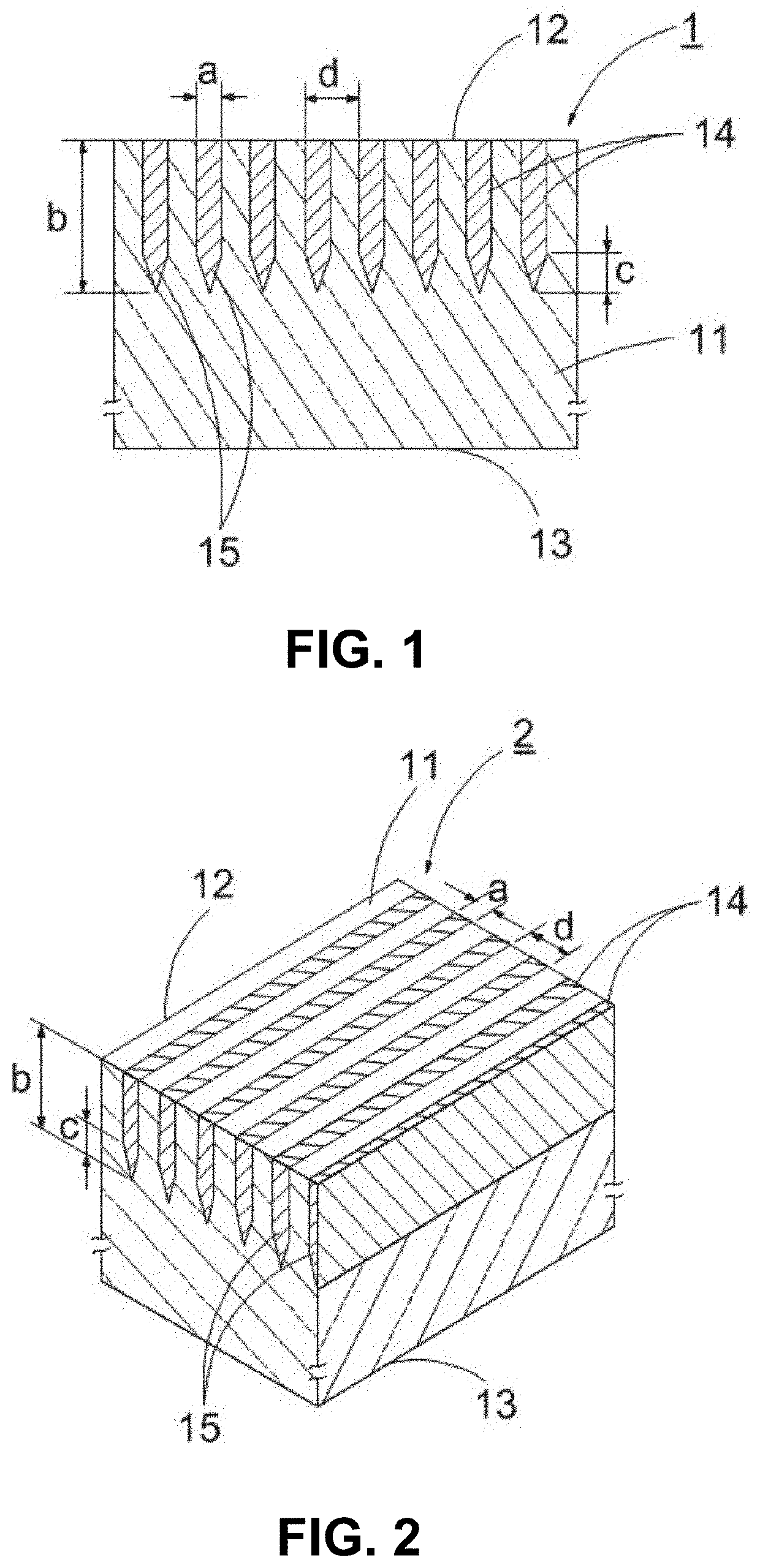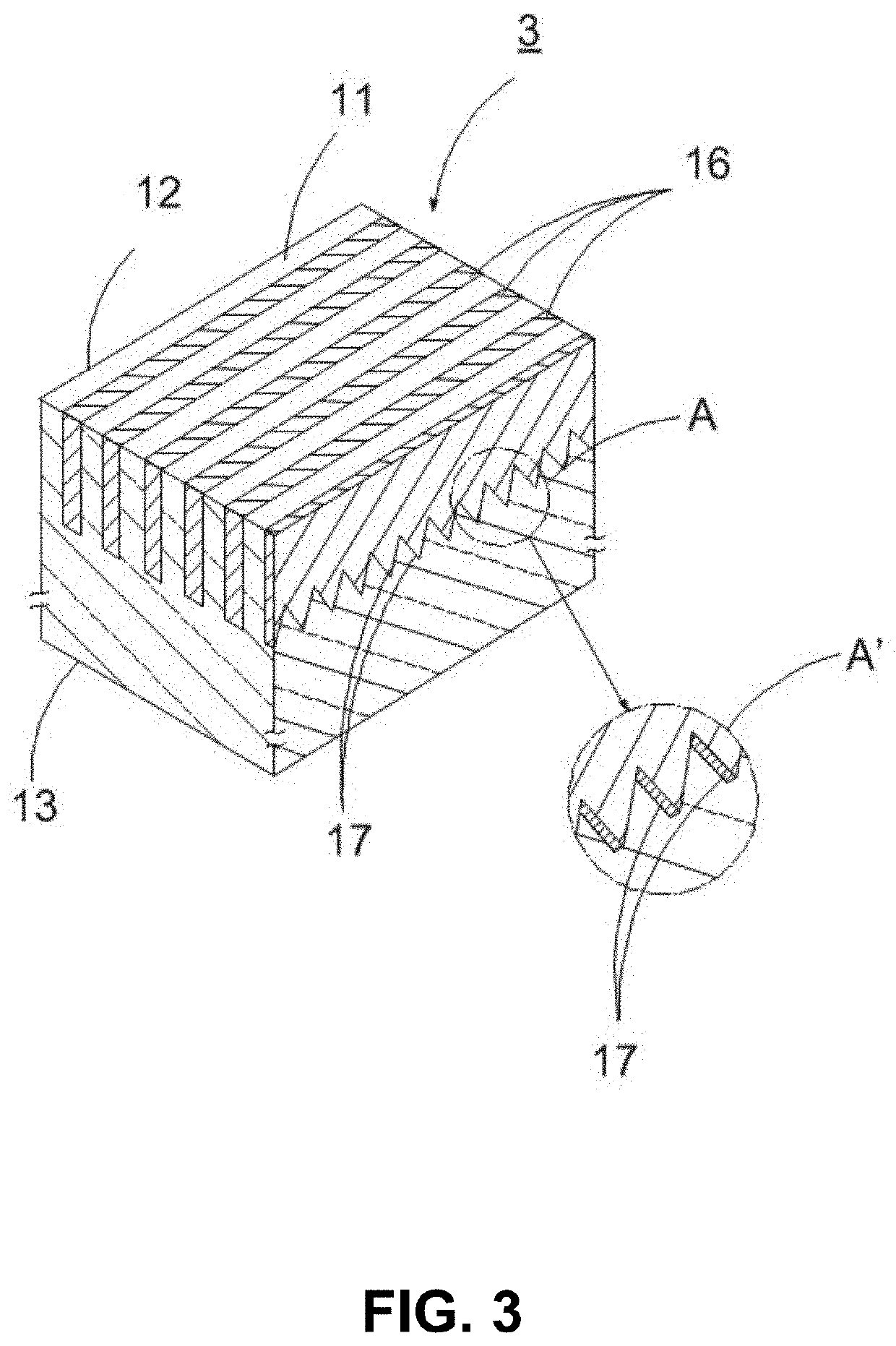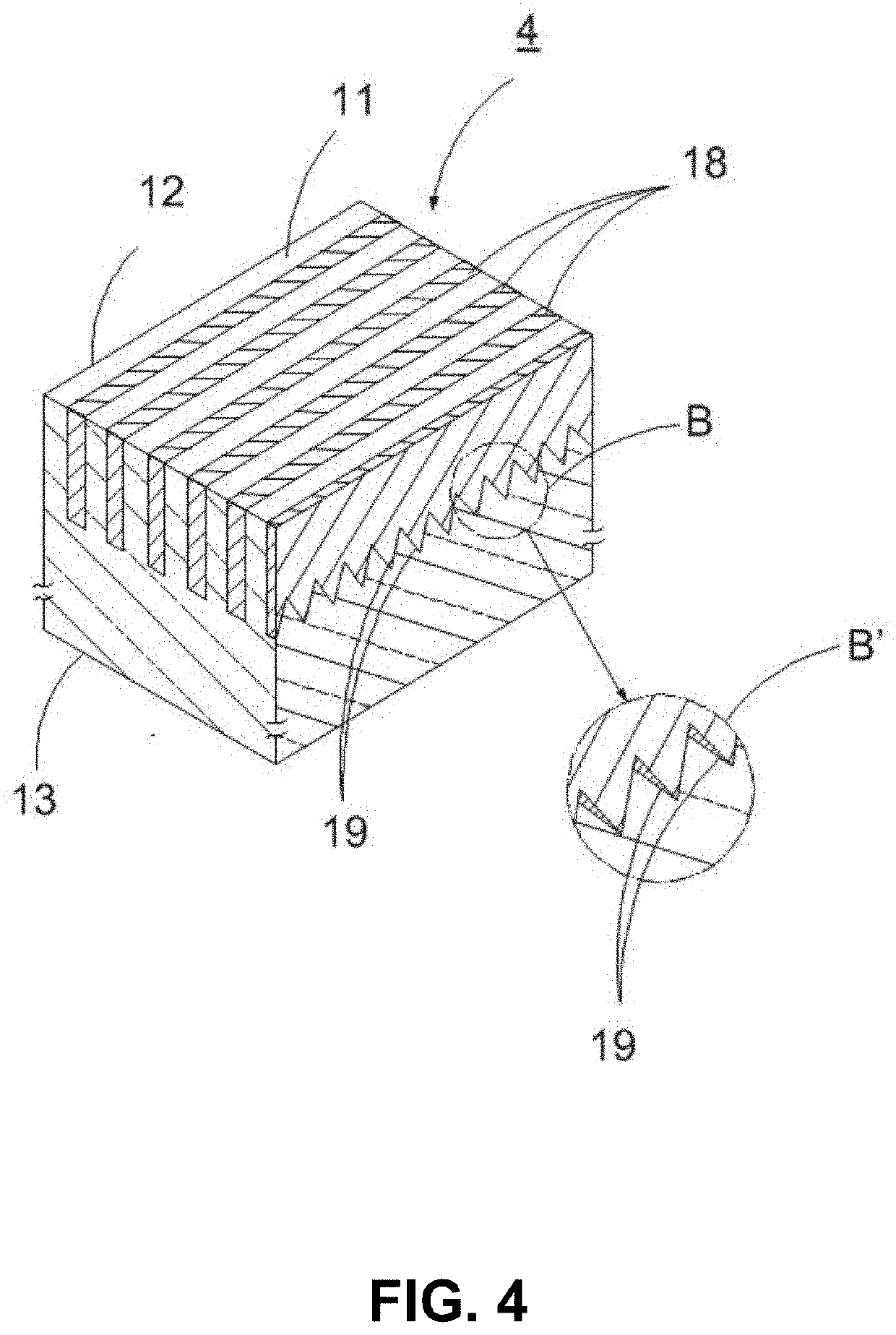Wire-grid polarizer and process for producing the same
a polarizer and wire-grid technology, applied in the field of wire-grid polarizers, can solve the problems of difficult stably manufacturing a low-reflection wire-grid polarizer, difficult to manufacture polarizers, etc., and achieve the effects of reducing the reflectance of incident light, excellent polarization performance, and maintaining the required light transmittan
- Summary
- Abstract
- Description
- Claims
- Application Information
AI Technical Summary
Benefits of technology
Problems solved by technology
Method used
Image
Examples
example 1
[0144]A microgroove structure was formed in the surface of a thermoplastic resin sheet by the thermal nanoimprinting method using a mold, followed by filling the grooves with ink containing silver microparticles, and then sintering the silver microparticles contained in the ink in a heated oven to prepare a polarizer specimen of the same type as the wire-grid polarizer (R1) described above.
[0145]The obtained polarizer specimen had an irregularly continuous concavo-convex shape at the tips in the one-dimensional grid array direction and in a cross-section perpendicular to the surface of the sheet.
(1) Formation of Microgroove Structure in Sheet Surface
[0146]A polycarbonate sheet (manufactured by Mitsubishi Engineering-Plastics Corporation, product name: FE-2000, thickness: 400 μm) was used as the transparent sheet. A mold used was made by microfabricating a 4-inch silicon wafer. As shown in Table 1 and notes thereof, the microstructure of the mold used had a convex shape for forming t...
examples 2 and 3
[0153]In Examples 2 and 3, microgroove structures were formed in the surfaces of the sheets using molds in the same manner as in Example 1, and, after ink was filled into the grooves, they were sintered to produce polarizer specimens which were of the same type as the wire-grid polarizer (R1) and had an irregularly continuous concavo-convex shape at the tips in a cross-section perpendicular to the sheet surface and in the one-dimensional grid array direction as in Example 1.
(1) Preparation of the Polarizer Specimens
[0154]The same transparent sheets as that used in Example 1 were used. As shown in Table 1 and notes thereof, the microstructures of the molds used were such that the shape of each of the convex parts for forming the grooves was the same as that of the above wire-grid polarizer (R1), the average width (a′) of the convex parts was 42.1 nm in Example 2 and 30.7 nm in Example 3, and the period (d′) of the array was 140 nm in Examples 2 and 3.
[0155]The average length (b′) up ...
examples 4 , 5 and 6
Examples 4, 5 and 6
[0161]Microgroove structures were formed in the surfaces of thermoplastic resin sheets by the thermal nanoimprinting method using molds, and then ink containing silver microparticles was filled into the grooves, followed by sintering of the silver microparticles contained in the ink in a heated oven to prepare polarizer specimens which were of the same type as the wire-grid polarizer (R1) and had an almost linear shape at the tips in a cross-section perpendicular to the surface of the sheet and in the one-dimensional grid array direction.
(1) Preparation of Polarizer Specimens
[0162]The same sheets as used in Example 1 were used. The microstructures of the molds used were such that the shape of each of convex parts forming the grooves was an inverted shape of the groove formed in the above wire-grid polarizer (R1), and the average width (a′), average length (b′), the average length (c′) toward the tip of the portions that gradually become thinner toward the tip and ...
PUM
| Property | Measurement | Unit |
|---|---|---|
| width | aaaaa | aaaaa |
| reflectance | aaaaa | aaaaa |
| reflectance | aaaaa | aaaaa |
Abstract
Description
Claims
Application Information
 Login to View More
Login to View More - R&D
- Intellectual Property
- Life Sciences
- Materials
- Tech Scout
- Unparalleled Data Quality
- Higher Quality Content
- 60% Fewer Hallucinations
Browse by: Latest US Patents, China's latest patents, Technical Efficacy Thesaurus, Application Domain, Technology Topic, Popular Technical Reports.
© 2025 PatSnap. All rights reserved.Legal|Privacy policy|Modern Slavery Act Transparency Statement|Sitemap|About US| Contact US: help@patsnap.com



